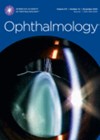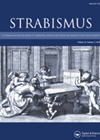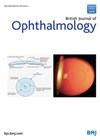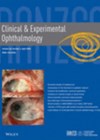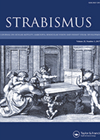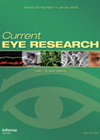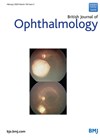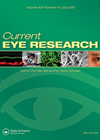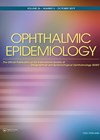
Journal Reviews
Oculofacial plastic surgery – is antibiotic prophylaxis required?
This is a randomised, controlled, unmasked clinical trial evaluating whether topical antibiotic prophylaxis reduces the rate of infection after oculofacial plastic surgery compared to a non-antibiotic ointment. A total of 401 participants over the age of 18 were recruited, with...
Paralytic strabismus in Parry-Romberg syndrome
Parry-Romberg syndrome is a progressive hemifacial atrophy with idiopathic craniofacial disorder characterised by slowly progressive atrophy of soft tissues on one side of the face. A case is presented of acquired monocular elevation deficit in a child without restrictive component....
Long-term outcome of scleral-sutured posterior chamber intraocular lens
This is a retrospective review of 392 consecutive cases in 349 patients who had scleral-sutured intraocular lens (IOL) due to aphakia, subluxated or luxated IOL, over a 10-year period in one centre from Barcelona. Preop and postop data were collected...
Accuracy of intraocular lens power calculations in paediatric eyes
A study comparing the accuracy of the SRK II, SRK/T, Hoffer Q, Holladay 1, T2 and Super formula in predictive refractive outcomes in children undergoing primary IOL insertion into the capsular bag following cataract surgery. A total of 377 eyes...
Mediation of vertical vergence
The authors hypothesised that if vertical vergence were mediated by vertical rectus muscles, then the eye that moves during a vertical fusion task would produce larger vertical vergence when abducted versus adducted. Similarly, if mediated by the oblique muscles then...
Smartphone use and its effects on eyes
Longitudinal pilot study on 12 young healthy adults comparing effects of smartphone use over a 60-minute period. Reading conditions and smartphone use was standardised for all participants. Ocular symptoms, tear function and binocular vision were assessed before and after each...
Episcleral brachytherapy (EB) for retinoblastoma (RB)
This retrospective study consisted of 11 eyes treated either with Iodine (I) -125 or Ruthenium (R) -106EB with a mean apical dose of 44Gy. There were five in group B (46%), three in group C (27%) and three in group...
Recession and resection surgery in TED
The aim was to investigate changes in ocular ductions in thyroid eye disease (TED) patients undergoing recession in comparison to recession / resection surgery. This was a retrospective study of 119 patients with inclusion of 102 eyes in final analysis....
Microbiology, risk factors and outcomes of microbial keratitis in Sydney, Australia
The authors present a retrospective case series including all patients with microbial keratitis and ocular surface diseases (OSD), including dry eye, blepharitis, Stevens-Johnson syndrome and / or ocular cicatricial pemphigoid, over a five-year period between 2012 and 2016. A total...
Paediatric enucleation in a tertiary eye centre in North China, 2001-2015
The authors review the demography and aetiology of paediatric enucleation over a 15-year period. A total of 9307 paediatric ophthalmic inpatients ranging from 0 to 14 years who underwent surgery at Shandong Eye Institute over the past 15 years were...
Lens surgery in patients with lens subluxation misdiagnosed as primary angle-closure glaucoma
Lens subluxation can be caused by many conditions including Marfan syndrome and other hereditary conditions, and blunt trauma. Lens displacement can cause pupillary block and angle closure. This is commonly misdiagnosed as primary angle closure glaucoma (PACG), which can lead...
Glaucoma and capillary perfusion
Elevated IOP is important but not the sole factor responsible for retinal ganglion cell (RGC) death and optic nerve damage in glaucoma. There is increasing evidence that visual loss correlates with macular inner retinal thinning. A total of 148 eyes...

